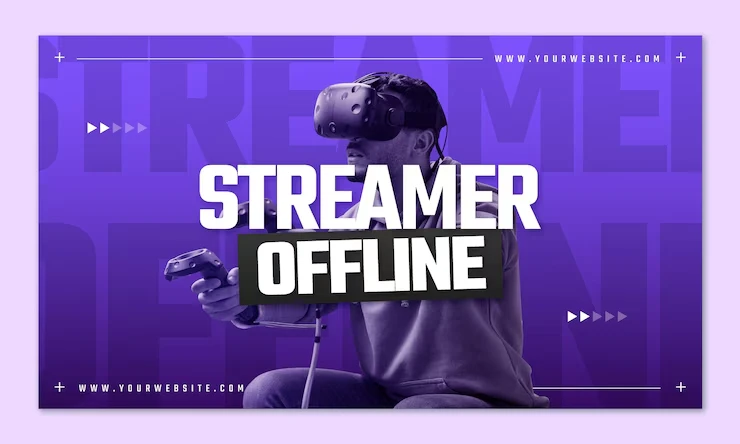Streaming has changed how we watch movies, TV shows, sports, and even take online classes. With just a few clicks, we can enjoy content anytime and anywhere. But for a good streaming experience, two things really matter: quality and speed. No one likes blurry videos or long loading times.
In this blog, you will learn how top streaming platforms focus on quality and speed and see new updates and trends in the streaming world.
Table of Content:
Why Are Quality and Speed So Important?

- Quality means clear video and sound. High-quality stream service makes watching more enjoyable.
- Speed means content loads fast. Slow loading and buffering make users frustrated.
People expect smooth and sharp stream service every time. That’s why companies are using smart technology to improve both.
Case Study 1: Netflix – Smart Video for Everyone
What makes Netflix great?
Netflix adjusts video quality based on your internet speed. This is called adaptive streaming. If your connection is slow, Netflix lowers the video quality a bit, so the movie keeps playing without buffering.
New Tech: AV1 Codec
Netflix now uses a new video format called AV1, which saves data. It lets you stream the same quality with 30% less internet usage.
Global Content Delivery Network (CDN)
Netflix’s Open Connect CDN, with servers strategically placed worldwide, minimises latency and ensures fast content delivery, enhancing streaming speed and reliability.
✅ Result: Smooth, high-quality streaming—even on average internet connections.
Case Study 2: JioHotstar – Big Merger in India
In February 2025, two big platforms—Disney+ Hotstar and JioCinema—merged to form JioHotstar.
What’s new?
- Combines movies, Disney shows, Indian TV, and live sports like IPL in one app.
- Uses Jio’s strong telecom network for fast streaming across India.
- Owned by Reliance (63.16%) and Disney (36.84%).
Advanced Features:
- Ultra HD 4K streaming
- AI-powered recommendations
- Multi-angle views during sports
- Real-time score overlays
✅ Result: One-stop shop for fast, fun, and rich content in India.
Case Study 3: Amazon Prime Video – Powered by AWS
Amazon Prime Video uses Amazon Web Services (AWS) to deliver fast, reliable videos worldwide.
How does it work?
- Uses servers around the world to bring content closer to users.
- Recently started using AWS Fargate, a serverless tool, to launch updates faster.
Why it’s Advanced:
The adoption of AWS Fargate enables faster deployments and scalability during peak events, allowing engineers to focus on enhancing the viewer experience.
✅ Result: Quick, stable stream service with smart tools behind the scenes.
Case Study 4: Spotify – Fast Music, Clear Sound

Spotify lets you listen to millions of songs every day without any long waits and with really good sound.
How it works
Spotify makes songs smaller so they don’t take long to load but still sound nice. It also saves parts of the songs on your phone or computer, so the music starts playing right away, even if the internet is slow.
Why it works
You don’t have to wait for songs to start, and the music doesn’t stop or skip. If you have the premium version, you can even hear better quality music.
✅ Result: Spotify gives you a smooth, fun music experience with no waiting or stopping, whether you’re on your phone or computer.
Case Study 5: Twitch – Watching Live with No Wait
Twitch is a website where people watch others play games live. The most important thing is speed—viewers want to see what’s happening right away, with no delays.
How it works
Twitch uses special technology that makes sure there’s only a tiny delay (about 2-5 seconds) between what’s happening in real life and what you see. They also let the people who are using the stream service choose the video quality, so people with slower internet can still watch.
Why it works
It makes it feel like you’re really talking and reacting with others in real time, which keeps viewers interested and coming back to watch more.
✅ Result: You get to watch things happen fast, just like in real life, and you can interact with other people while watching.
Case Study 6: Zoom – Fast and Clear Meetings
Zoom became super popular during the pandemic because it helps people have video meetings. For Zoom, both speed and clear quality are really important.
How it works
Zoom changes the video and sound quality depending on how good your internet is. If your internet is weak, it makes the video a little blurry but keeps the sound clear. Zoom also uses many computers around the world to keep meetings fast and stable.
Why it works
In meetings, people care more about being able to hear and understand each other than having perfect video quality. Zoom focuses on making sure the meeting works well.
✅ Result: Zoom works great, even with average or slow internet connections. It’s simple and reliable!
Latest Trends in Streaming Platform (2025)

Here are some of the latest trends in streaming in 2025:
- AI for Better Suggestions: Stream service apps are using smart AI to suggest shows and movies you’ll love. It also helps them load content quicker based on what you might want to watch next.
- Mergers for More Content: Platforms like JioHotstar are teaming up, so you get access to even more movies and shows in one place.
- Short Videos Everywhere: Short videos (think YouTube Shorts or Instagram Reels) are taking over. Stream service apps are adding more of these quick clips to keep you hooked.
- Flexible Subscriptions: Some services now offer cheaper plans with ads or let you pay only for what you watch. This makes it easier to pick what works best for your budget.
- 5G & Faster Streaming: With 5G rolling out, stream service on your phone is getting way faster. Plus, apps are using tech that cuts down on delay by processing data closer to you.
How These Platforms Keep Things Fast and Clear
All the case studies share similar strategies behind the scenes:
| Tech Used | What It Does |
|---|---|
| Adaptive Streaming | Adjusts video quality to match your internet speed |
| Content Delivery Networks (CDNs) | Sends content from nearby servers for faster loading |
| AI & Machine Learning | Makes recommendations and speeds up content delivery |
| New Codecs (AV1, HEVC) | Compress videos so they use less data but look great |
| Cloud & Microservices | Keeps platforms flexible, scalable, and easy to update |
streaming an integral part of modern entertainment culture.
The Future of Fast and High-Quality Streaming
As technology grows, so will our expectations. People want instant access to the best content, anywhere, anytime. Here’s what to expect in the future:
- 5G Networks: Will make mobile stream service even faster and smoother.
- AI-Powered Compression: Smart tools will make content smaller and sharper.
- Cloud Gaming & VR Streaming: Platforms like NVIDIA GeForce Now and Meta Quest are already pushing into this space, where speed is even more critical.
Stream service companies will need to keep investing in better tech to stay competitive.
Conclusion
In a crowded market, streaming platforms that focus on quality and speed stand out. Whether it’s Netflix’s smart video tech, JioHotstar’s big content library, or Amazon Prime’s powerful backend, these companies know that a great user experience is key. As new technology keeps evolving—like AI, 5G, and smart devices—streaming will become even faster and more personalised. The platforms that stay ahead in quality and speed will win the race for our attention.


